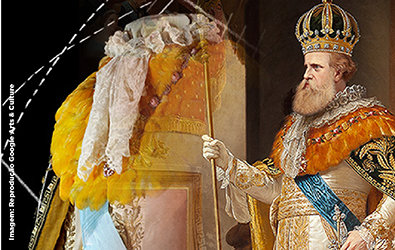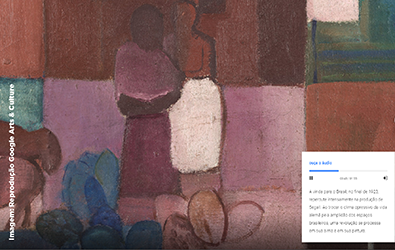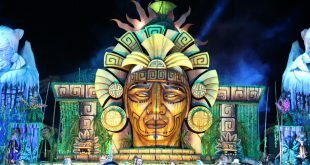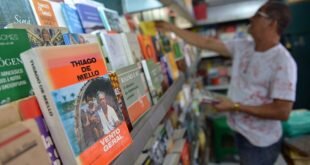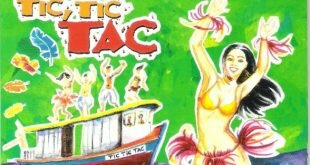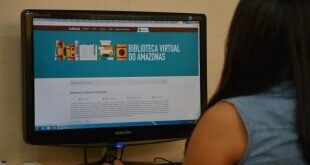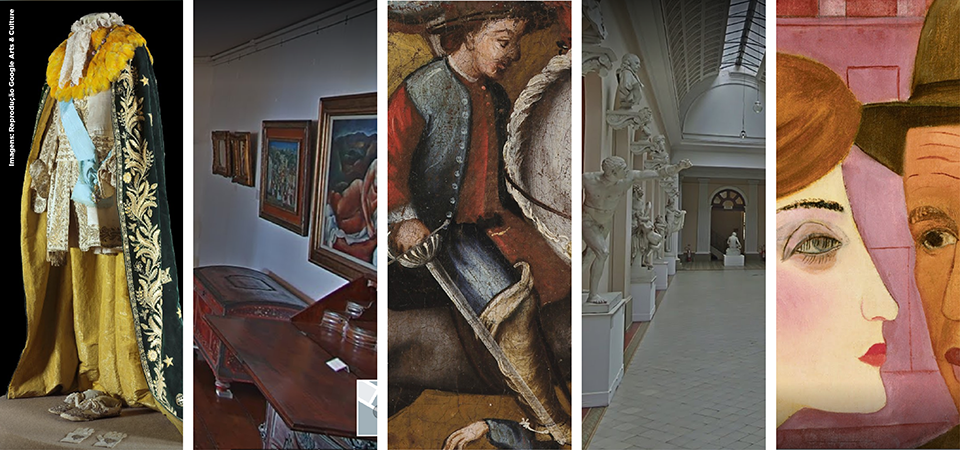
How about taking the time after a day of work to visit a museum and get to know contemporary classic works or even analyze the history of Brazil through the eyes of great national and international artists? The opportunity is just a click away because more than 1,300 items and 18 exhibits from five museums managed by the Brazilian Institute of Museums (Ibram)institution linked to the Ministry of Culture (MinC).
O tour virtual tour is possible thanks to a partnership between Ibram and Google, which was closed on February 3rd of this year. The following museums can be visited: Museu Nacional de Belas Artes (RJ); Museu Histórico Nacional (RJ); Museu Imperial (RJ); Museu Castro Maia (RJ) - formed by the Açude and Chácara do Céu museums; and Museu Lasar Segall (SP).
Fine Arts National Museum
It is possible to appreciate the collection of the French Artistic Mission that brought artists such as Jean Baptiste Debret and Nicolas Antoine Taunay to Brazil in the beginning of the XIX century with the objective of creating an art and craft school in the then capital, Rio de Janeiro. The Mission aired the panorama of the art scene and instituted the neoclassical style with paintings such as Debret's "Portrait of King João VI" and "Study for the landing of Dona Leopoldina in Brazil", both from 1817. The virtual tour of the Museum also offers the public contact with the first generation of Brazilian artists trained by foreign teachers who arrived here with Joachim Lebreton, head of the entourage of artists and artisans.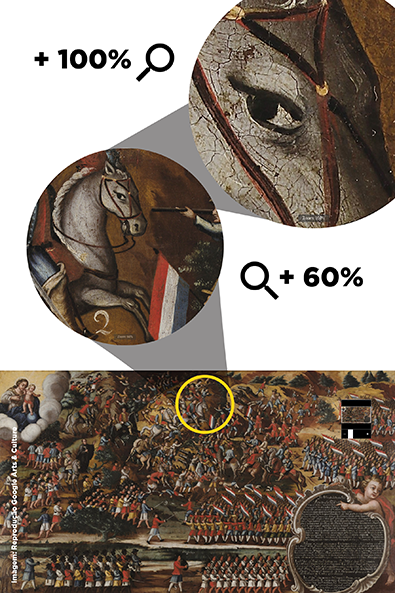
National Historical Museum
One of the main attractions of the project is to be able to check the details of some works, which were captured by a camera capable of scanning with super-resolution and revealing details that could go unnoticed by the naked eye. The painting “[Ex-Voto] Battle of Guararapesfrom 1758, is one of the 450 works available using this technology. Part of the National History Museum's collection (RJ), the painting portrays one of the biggest battles that took place in the colonial era, which culminated with the Dutch losing control of Pernambuco's territory outside Recife.
By zooming in on the painting, it is possible to explore the details of the joint action of Portuguese Europeans, Africans, and Indigenous peoples (who made up the Brazilian population) in a tactic amidst the contours of the Morro dos Guararapes, which served to create ambushes for the Dutch.
From the work one can also identify religious characteristics that were a stimulus to combat. According to historians, the conversion of the patriots (who would later become the Brazilians) to Portuguese Catholicism allowed the union against the Dutch Jews and Protestants, perceived as outsiders. The work is also related to the origin of the Church of Nossa Senhora dos Prazeres do Monte de Guararapes, in Recife, as a form of public testimony of the strength of the steward, in a practice of the time known as ex-voto.
Imperial Museum
In addition to works of art, other historical items can be contemplated through the screens of cell phones, tablets or computers. Another Google project, the We wear Culture (project conveys the fascination of costume e insignias worn by D. Pedro II at his coronation, in 1841, as Emperor of Brazil out of the physical environment of the Imperial Museum (RJ), whose collection they comprise.
Noble fabrics to wear: velvet, silk, gold threads, as well as noble metals and precious stones in the royal insignia. The royal costume, above all, showed the wealth of the lands ruled by the emperor-boy. "To talk about the costume worn by D. Pedro II in his coronation, first of all, is to talk about how the clothing is the attribute of who wears it: it does not escape any symbolic rule present in the 19th century. They are symbols of power and of affirmation of the newly independent country, which sought place and respect among the great and traditional kingdoms existing in Europe", explains the coordinator of the digitalization project of the Imperial Museum, Muna Durans.
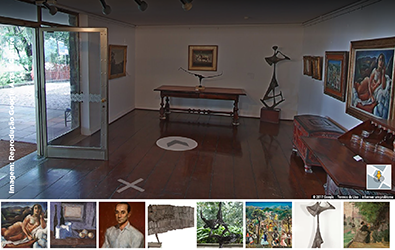
Castro Maia Museums
The eclectic profile of the Castro Maia Museums' (RJ) collection - formed by the Açude and Chácara do Céu museums - draws attention. The collector and patron of the arts Raymundo Ottoni de Castro Maya donated the properties and the entire collection of around 17 thousand items, which encompass plastic arts, applied arts, decorative arts, and bibliofilia.
This rich collection can be visited as it is arranged in the museum on a tour 360º virtual tour through the rooms and gardens of the property.
Upon entering the museum virtually, the visitor is confronted with a portrait of Castro Maya made by his friend Candido Portinari, with whom he developed many projects from the 1940s until the artist's death. This twenty-year relationship resulted in the accumulation of 168 originals, including paintings, drawings, engravings, and book illustrations. The museum is one of the largest public collections of the Brazilian painter and artist.
Looking around and climbing the museum's stairs, other works by Portinari can be seen: "The Dream", "Boy with a Top", "The Shoemaker from Brodowski". Considered one of the most prestigious artists in Brazil, he was the Brazilian painter who achieved the greatest international projection with works such as the gigantic panels "War and Peace", presented to the United Nations (UN) headquarters in New York in 1956.
During the tour, it is also possible to see pieces from the collections of Oriental art, Brasiliana, modern Brazilian art, Brazilian popular art, and European art from the 19th and 20th centuries, besides some sparse examples of classical pieces and works from the 17th and 18th centuries.
Lasar Segall Museum
Through the project it is also possible to learn about the history of the artist behind the works. The process of the abrasileiramento of the Lithuanian Lasar Segall is presented in an audiovisual theme: his most representative works and explanatory audios of each phase of his artistic production go from the European impressionism at the beginning of the 20th century to the "revelation of the miracle of color and light" with the modernist movement after visiting Brazil in the 1920s.
"The departure from Germany to Brazil in 1923 would completely change Lasar Segall's view of everything that now surrounded him. The new colors, warm and full of life, and the proximity to the passionate way of being of the Brazilian people were definitively installed in Segall's soul," narrates one of the audios while extolling the influence of renowned Brazilians of the modernist movement, such as Tarsila do Amaral and Mario de Andrade, on the artist's work.
The Lasar Segall Museum (SP) is installed in the spaces that were his home and studio, adapted to this new purpose. The artist returned definitively to Brazil in 1932, in the house designed by his brother-in-law, the modernist architect Gregori Warchavchik.
 Manaus Ágil tourism and culture of Amazonas
Manaus Ágil tourism and culture of Amazonas
